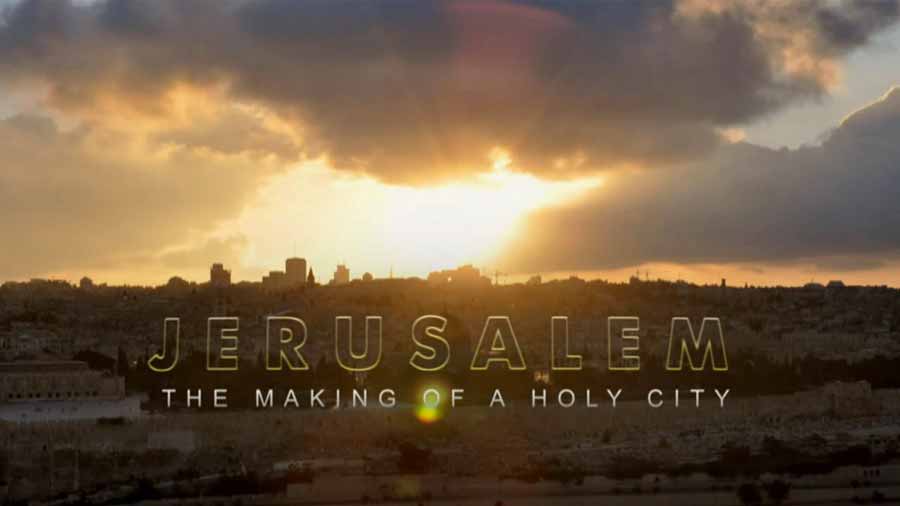Jerusalem: The Making of a Holy City episode 1: In episode one, Simon delves into the past to explore how this unique city came into being, explaining how it became of such major importance to the three Abrahamic faiths, and how these faiths emerged from the Biblical tradition of the Israelites.
Jerusalem is one of the oldest cities in the world. For the Jewish faith, it is the site of the Western Wall, the last remnant of the second Jewish temple. For Christians, the Church of the Holy Sepulchre is the site of the death and resurrection of Jesus Christ. And for Muslims, the Al-Aqsa mosque is the third holiest sanctuary of Islam.
Starting with the Canaanites, Simon goes on a chronological journey to trace the rise of the city as a holy place and discusses the evidence for it becoming a Jewish city under King David. The programme explores the construction of the first temple by Solomon through to the life and death of Jesus Christ and the eventual expulsion of the Jews by the Romans, concluding in the 7th century AD, on the eve of the capture of Jerusalem by the Muslim caliph, Umar ibn al-Khattab.
Jerusalem: The Making of a Holy City episode 1
Jerusalem is a city in the Middle East, located on a plateau in the Judaean Mountains between the Mediterranean and the Dead Sea. It is one of the oldest cities in the world, and is considered holy to the three major Abrahamic religions—Judaism, Christianity, and Islam. Both Israel and the Palestinian Authority claim Jerusalem as their capital, as Israel maintains its primary governmental institutions there and the State of Palestine ultimately foresees it as its seat of power; however, neither claim is widely recognized internationally.
During its long history, Jerusalem has been destroyed at least twice, besieged 23 times, captured and recaptured 44 times, and attacked 52 times. The part of Jerusalem called the City of David shows first signs of settlement in the 4th millennium BCE, in the shape of encampments of nomadic shepherds. Jerusalem was named as Urusalim on ancient Egyptian tablets, probably meaning “City of Shalem” after a Canaanite deity, during the Canaanite period (14th century BCE).
During the Israelite period, significant construction activity in Jerusalem began in the 9th century BCE (Iron Age II), and in the 8th century the city developed into the religious and administrative center of the Kingdom of Judah. In 1538, the city walls were rebuilt for a last time around Jerusalem under Suleiman the Magnificent. Today those walls define the Old City, which has been traditionally divided into four quarters—known since the early 19th century as the Armenian, Christian, Jewish, and Muslim Quarters.




